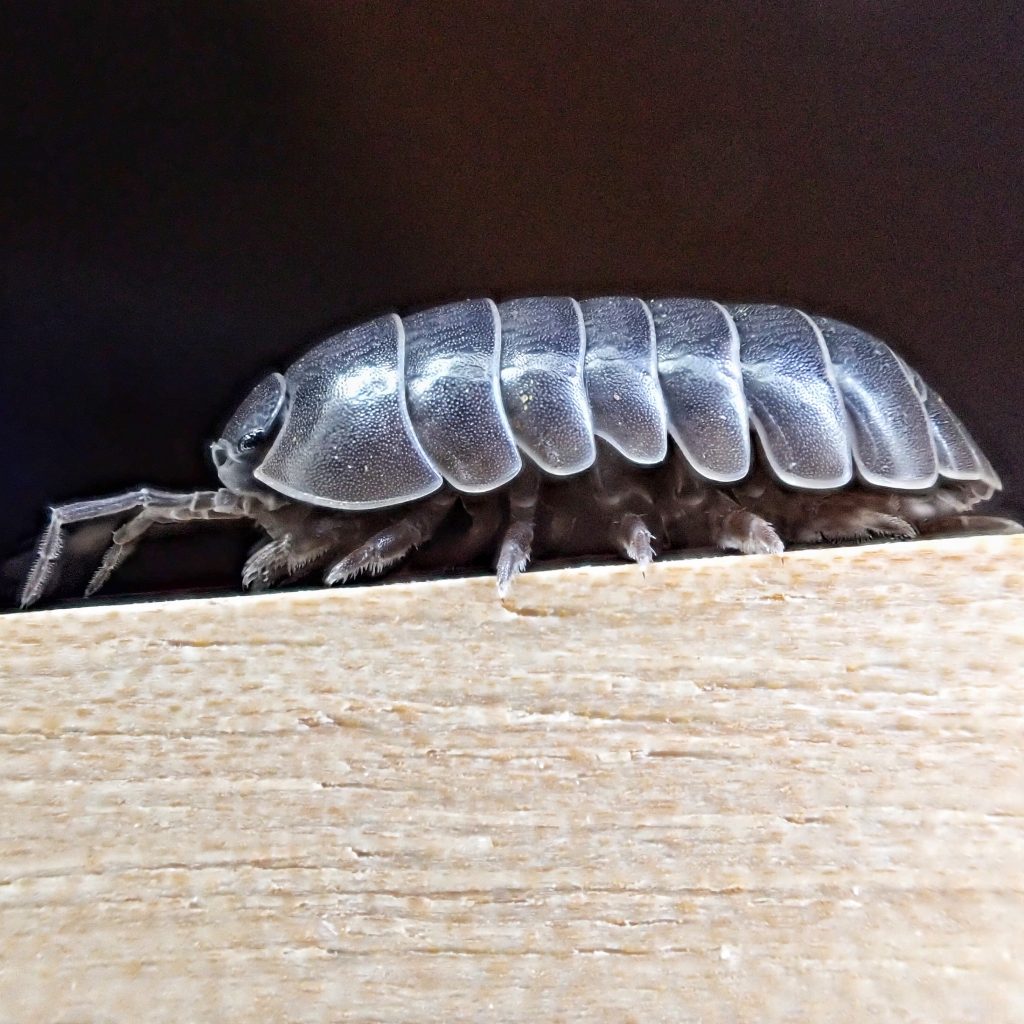
Oniscids in the family Armadillidiidae (order Isopoda) are the woodlice that are properly called pillbugs, rolypolies, and potatobugs, due to their ability to roll into a tight ball (conglobulate). This particular species also gets called common pill woodlouse, doodlebugs, and carpenters. This conglobulation has the dual purpose of protecting the animals from certain types of predators, and helping to conserve moisture. The fact that Armadillidiidae can be found in drier habitats than other woodlice is evidence that it is effective for the second purpose.
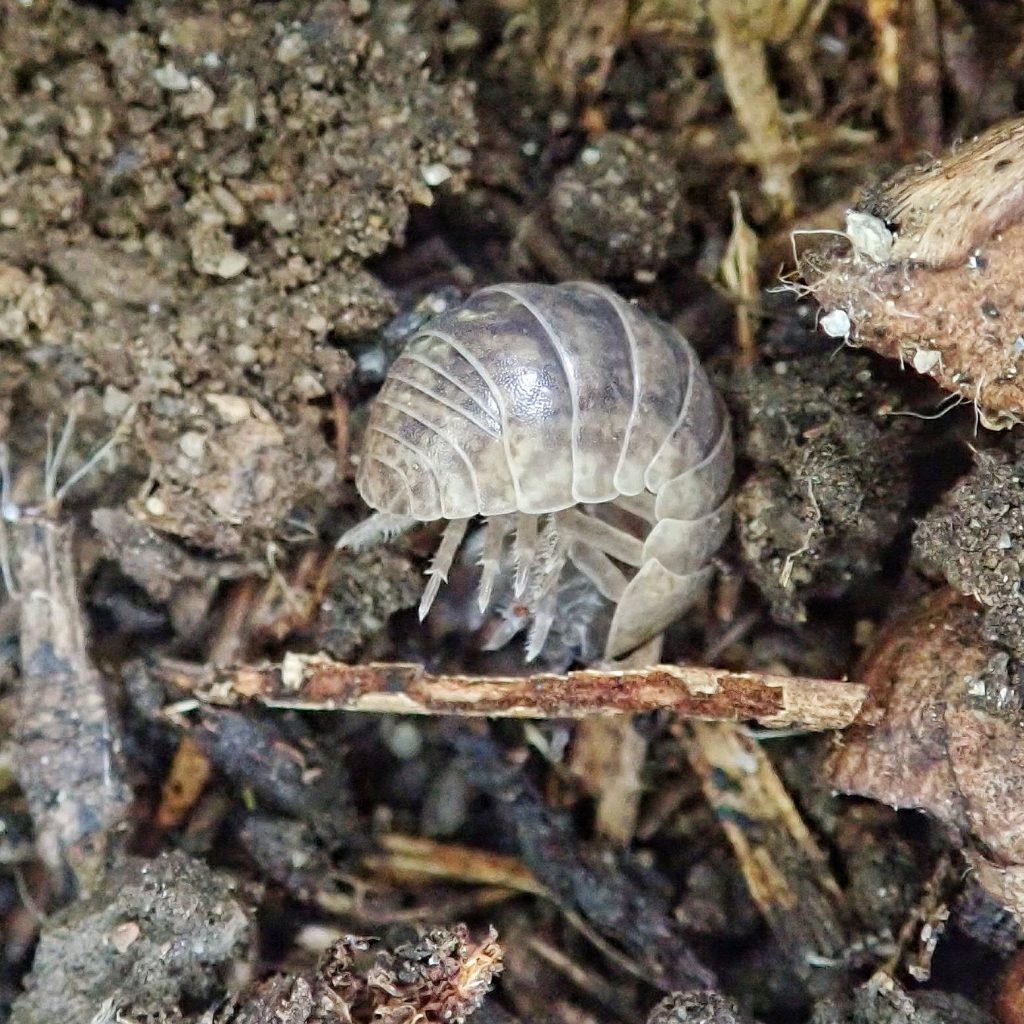
Many of the terrestrial crustaceans known as woodlice produce aggregation pheromones, and Armadillidium vulgare is no exception, although it is unclear whether these aggregation chemicals are used to denote prime (high humidity, abundant food, etc) habitats, or whether the aggregations themselves promote a prime habitat. One thing they certainly do promote is ease in finding a receptive mating partner. And it has been found that aggregations of females accelerates vitellogenesis (yolk formation within the egg) and synchronizes reproductive activity. Females are only receptive to the male’s advances during the parturial (birthing) intermoult whilst forming their marsupium. The young hatch as manca, which are simply immature forms of adults, and do not have the nauplius (larval) phase common to most crustaceans. For more information on general woodlice life cycles see my recent profile of Oniscus asellus.
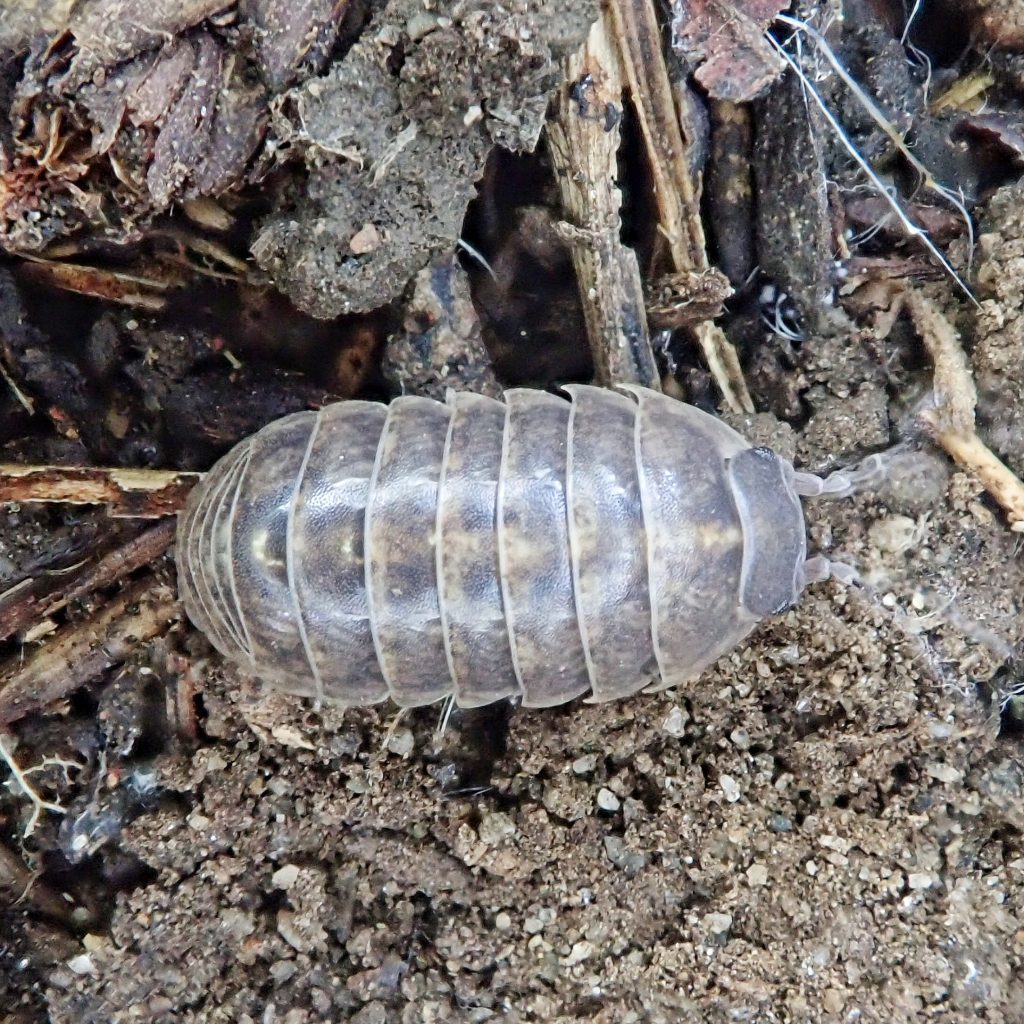
Despite their occasional pest status in nurseries, agricultural venues, and mushroom cellars, Armadillidium vulgare perform important roles in the decomposition of forest floor litter, with one study showing that they increased the ph, phosphorus, potassium, and nitrates (all of which are important for most plant life), and decreased the carbon, within the top layer of the soil. And from a personal standpoint my investigations into woodlice have resulted in me feeling great joy every time I now encounter these little crustaceans in my explorations.
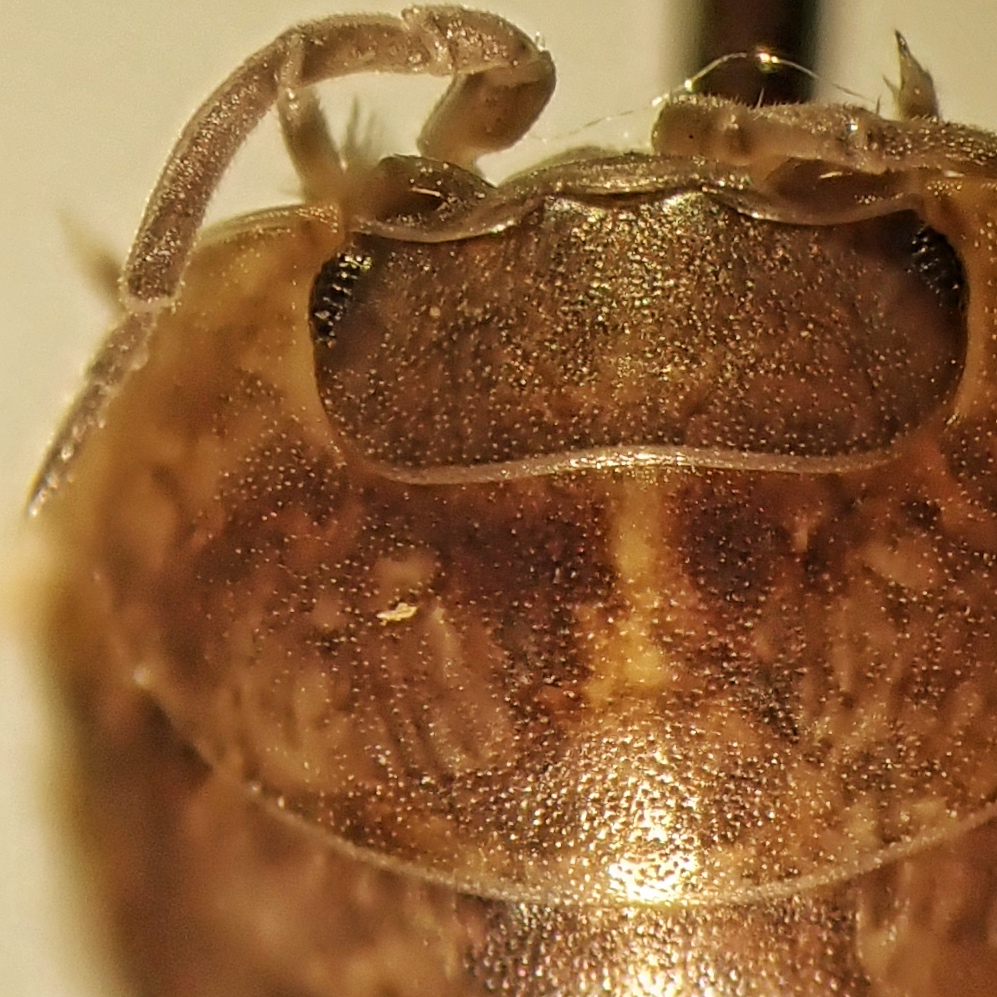
Description-Medium sized (up to 15mm long) oval, convex, brown to grey woodlouse that often has a lighter, yellowish midline and yellowish blotches along the dorsal surface; large patch of ocelli (simple eyes) on the side of the head; uropods just reach end of telson; telson trapezoidal in shape with a flat, blunt tip; two pairs of white gills on the ventral pleon (abdomen); head more or less flattened in front; antenna are hidden when conglobulated.
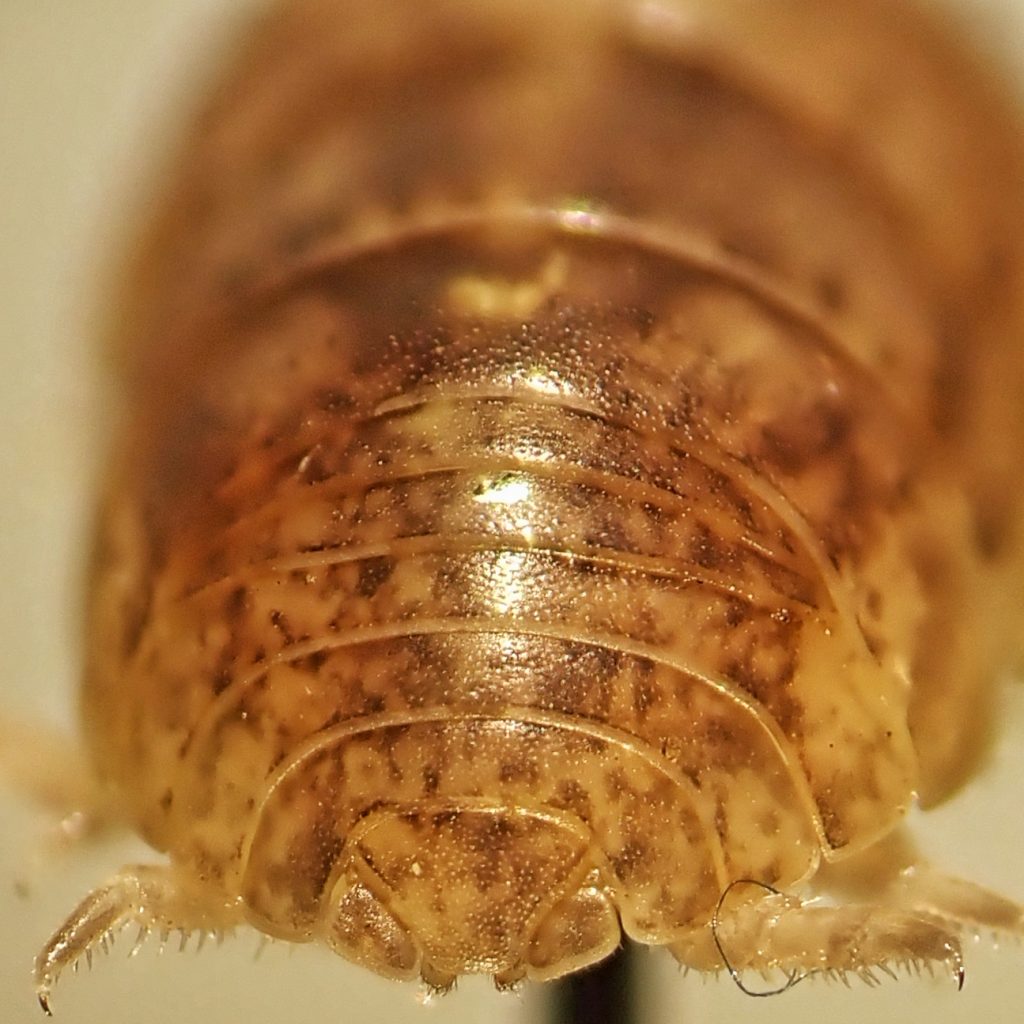
Similar species–Armadillidium nasatum has front middle of head protruding outward, and the telson is triangular with a rounded tip; Cylisticus convexus antenna exposed when conglobulated, uropods longer than telson, has five pairs of gills; other woodlice flatter, can’t conglobulate, and have exposed uropods; pill millipedes have two pairs of legs per body segment, and are not crustaceans.
Habitat-Humid, sheltered areas under rocks, pavers, logs, boards, flowerpots; common in greenhouses and often found in cellars and basements.
Range-Native to the Mediterranean, now nearly cosmopolitan; region wide in appropriate habitats.
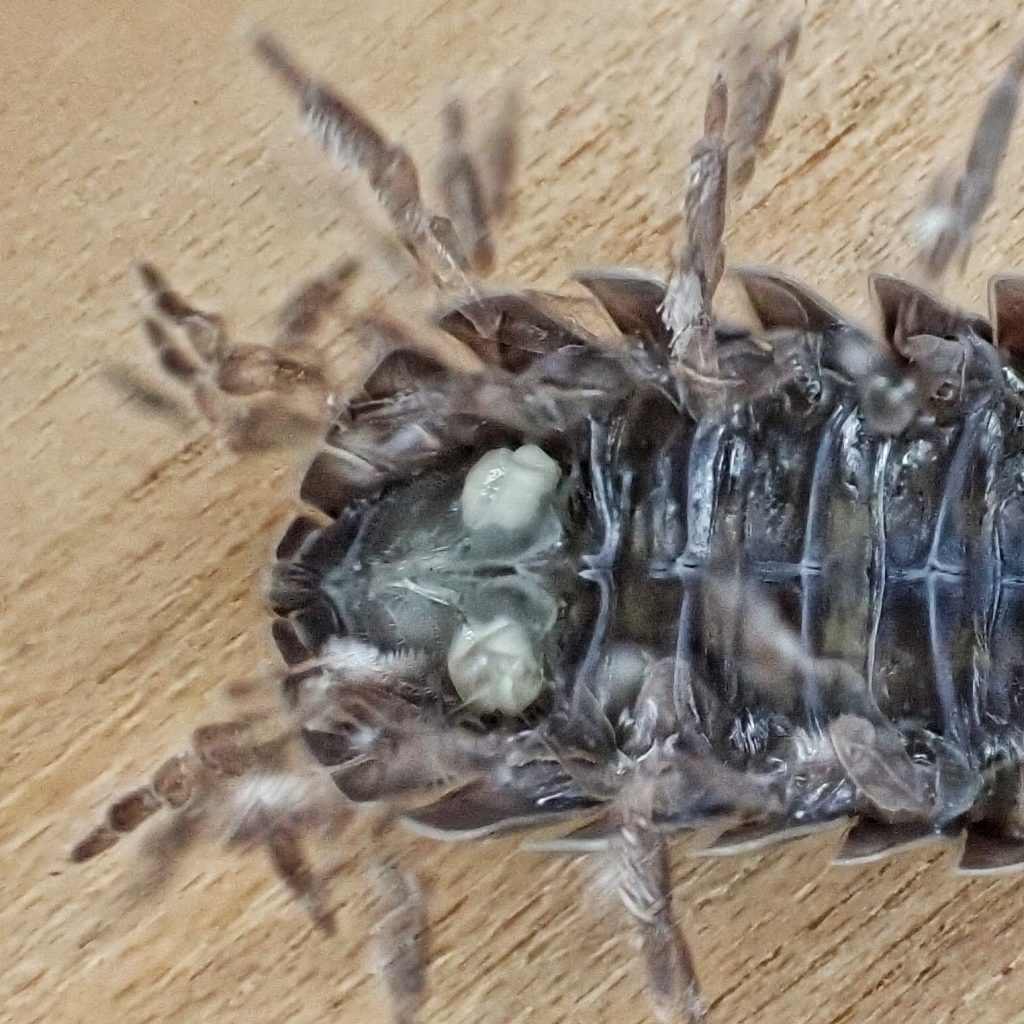
Eats-Primarily a detritivore, and consumer of decomposing organic material, but they will also eat living plant tissue and fungus, and are considered to be a greenhouse and mushroom cultivation pest; Will also consume their own feces (approximately 9% of their diet), although whether this is to replenish gut bacteria or to further extract nutrition from it is unclear; also known to eat their moult sheddings, to recoup the calcium.
Eaten by-Robins, crows, starlings, and other birds; salamanders and lizards; carabid beetles and the spiders Dysdera crocata and Steatoda grossa; It is a host for the parasitic thorny-headed worm Plagiorhynchus cylindraceus, Wolbachia spp. bacteria, and the iridovirus IIV-31, which turns them blue and shortens their lifespan.
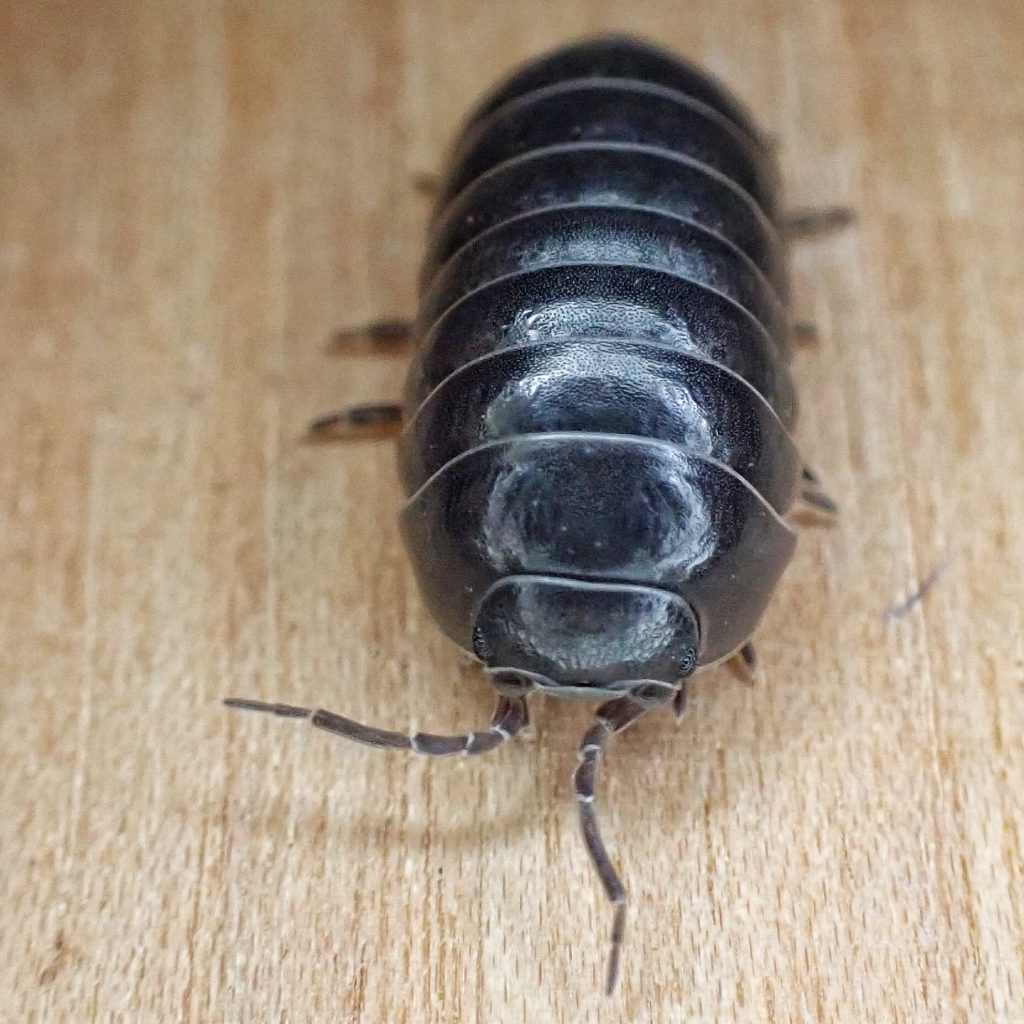
Adults active-Nocturnal; year around, but usually deep under cover during the coldest and driest times.
Life cycle-females only breed during the parturial intermoult, but may store sperm for a second egg clutch, and may have back to back parturial moults in prime conditions; hatchlings (manca) leave the marsupium 2-3 days after hatching; average lifespan is 1.5 years, but may live up to three years.
Etymology of names–Armadillidium is from the ancient Latin for woodlice, and references the fact that they are armored by their tergites. The specific epithet vulgare is from the Latin for ‘common’.

https://animaldiversity.org/accounts/Armadillidium_vulgare/
http://bioweb.uwlax.edu/bio203/f2013/miller_kels/interactions.htm
https://entnemdept.ufl.edu/creatures/MISC/Armadillidium_vulgare.htm
https://bugguide.net/node/view/94180
The Best Timing of Mate Search in Armadillidium vulgare (Isopoda, Oniscidea)
https://en.m.wikipedia.org/wiki/Armadillidium_vulgare
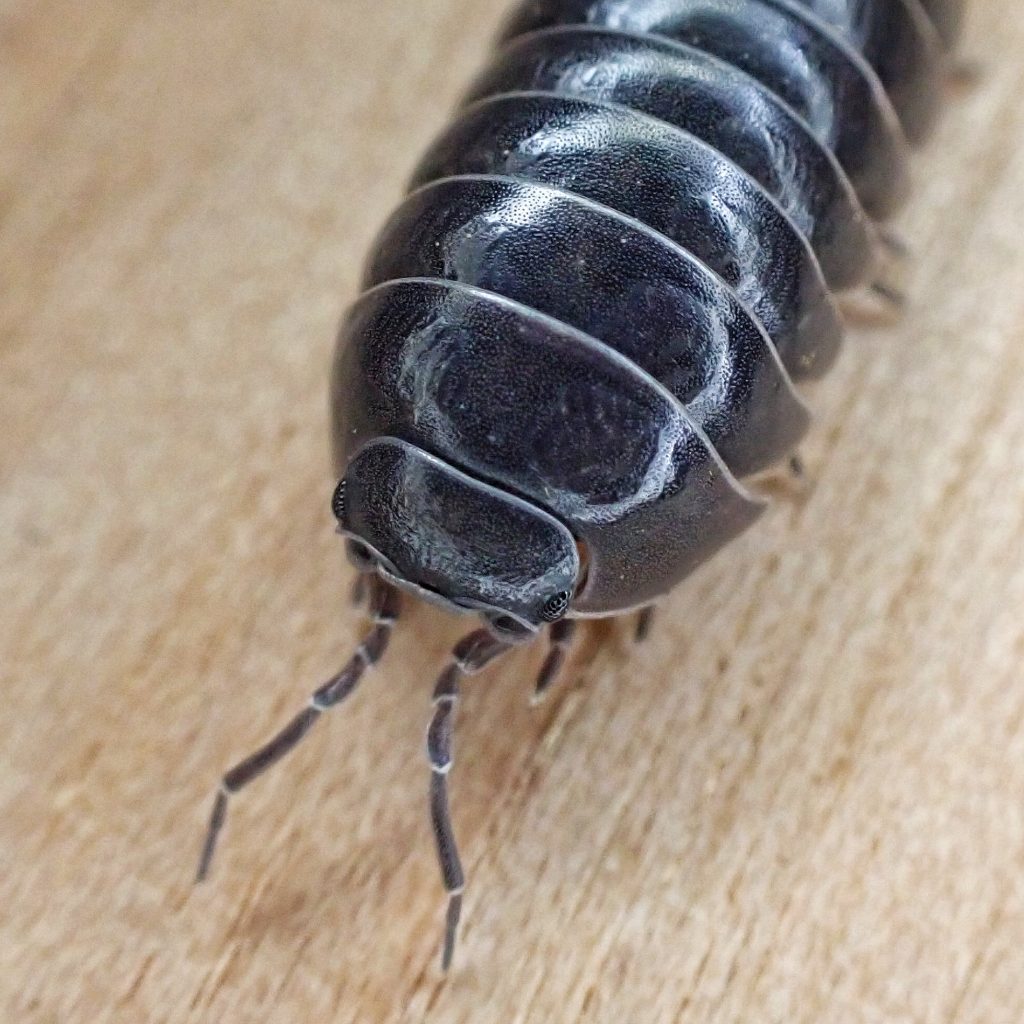
Sweet. My first bug-love!
We always remember our first one!